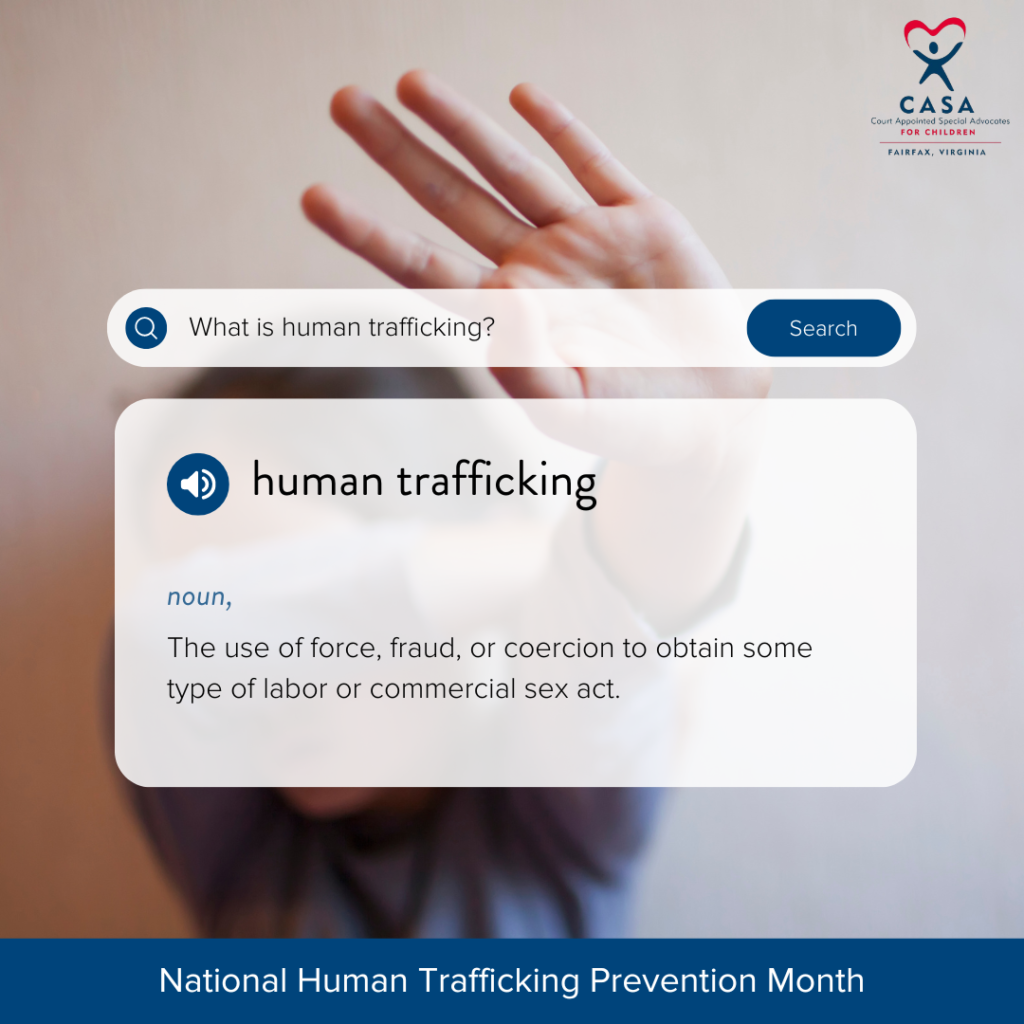Foster Youth and Human Trafficking

As we dedicate January to raising awareness for human trafficking, we are faced with the devastating truth that foster youth and former foster youth are at-risk of being trafficked. Human trafficking is often dismissed as an issue occurring only in foreign countries however, just last year, the National Human Trafficking Hotline received 583 contacts from Virginia. Human trafficking happens in Virginia, and it happens to the most vulnerable people in our community.
What is human trafficking?
Defined by the U.S. Department of Homeland Security, human trafficking is “the use of force, fraud, or coercion to obtain some type of labor or commercial sex act.” Human trafficking crimes favor no one type of victim- millions of men, women, and children become victims of human trafficking each year. The true number of victims of human trafficking in the United States is unknown and there are many challenges to data collection as victims often choose not to self-identify. There are two general categories in which human trafficking crimes may fall: labor trafficking and sex trafficking.
Labor trafficking occurs when force, fraud, or coercion is used to subject a person to involuntary servitude, peonage, debt bondage, or slavery.
Sex trafficking is the recruitment, harboring, transportation, provision, obtaining, patronizing, or soliciting of a person for the purpose of commercial sex.
Who do traffickers target?
Traffickers prey on vulnerable individuals, often those who are struggling to have their basic needs met. Circumstances that make one more susceptible to human trafficking include:
• Adverse childhood experiences (ACEs)
• Economic hardship
• Lack of a support system
• Depression or mental health struggles
• Previous abuse
The parallels between high-risk attributes for human trafficking and the experiences of foster youth are alarming. In 2018, National Foster Youth Institute uncovered that 60% of child trafficking victims are current or former foster youth. The experiences of children who typically land in foster care can make them easier to be manipulated, coerced, or forced into exploitation. Perpetrators of human trafficking often use a person’s vulnerabilities and un-met needs against them. Victims are seldom taken by physical force, rather they are coerced through feelings of acceptance and love just before they are cast into a nightmare.
Changing The Outcome
With the growing awareness of human trafficking, the child welfare system and its players can address and potentially reduce risk factors for children in foster care, changing their outcomes. At-risk youth and those who work with them need to be educated on the signs and tactics of human trafficking. Knowledge and education provide the tools for foster youth to recognize and report coercion. Child welfare agencies can be at the forefront of change by providing adequate support and services to diminish the risk factors associated with victimization. We can’t change what happened to children before they entered foster care, however we can ensure they have the stability, support, and surroundings to heal from past trauma and continue to a successful future.
You can help end the cycle of trauma and abuse by becoming an advocate for children in foster care with Fairfax CASA. Our CASA volunteers quickly become the one trusted adult in the lives of the children they serve, allowing them to be seen, heard, and cared for through their most vulnerable days.
If you or someone you know may be a victim of human trafficking, call the National Human Trafficking Hotline at 1-888-373-7888. In an emergency, always call 911.
More Resources:
Human Trafficking and Child Welfare: A Guide for Child Welfare Agencies
What You Need to Know About Foster Care and Human Trafficking
Polaris Project
